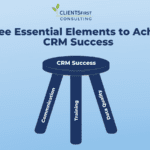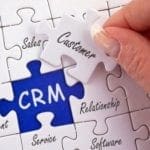Herding Cats: Five Ways to Increase CRM Adoption

In the past CRM adoption, and ultimately CRM success, was measured by the number of attorneys using the system on a regular basis. Although technology has evolved to make interacting with and utilizing CRM systems easier, lawyers are still reluctant to see the value in the system and firms are seeing fewer and fewer contact records being uploaded, updated and maintained and failing to increase CRM adoption.
This is why it can sometimes feel like you are herding cats when trying to get attorneys to use the CRM system – only, these cats are really smart, have opposable thumbs, and argue for sport.
While there may be many reasons for this, we believe that this traditional view of adoption can leave any CRM implementation project a cat-astrophic failure. To achieve CRM success, firms should redefine and measure adoption not by the number of attorneys actively using the system, but by the amount of value that the firm and attorneys get from the system.
But how can we define this value? Just as a cat curiously explores every nook and cranny of its environment, here are five tips that can help you delve deeper into your CRM and increase adoption.
1. Manage Expectations
Because unrealistic expectations can present a formidable object to CRM success, it’s important to set reasonable expectations for the system. Some may assume that the data they have in the system will always be current, clean and complete, but that will never be the case.
To help mitigate and set expectations, have talks with key stakeholders or end users about problems they are experiencing, tedious or mundane processes that could be automated, or ways they can improve communication and coordination.
2. Communicate and Educate
Communication and training are critical to CRM success. Your communication strategy should be centered around what the system can do for attorneys, rather than what they need to do to get value from the system. This focuses much more on what they are going to get and how they can use the information, rather than why they need to.
Training plans should be customized based on key user groups and individuals and be targeted based on the unique needs of each group. While most individuals can be trained in groups with scenarios that are relevant to their needs, attorneys should be trained desk-side in brief intervals with information that is relevant to them. To get these groups to attend training, you may have to offer some incentives, like pizza… or catnip. All kitten aside, we have found food to be the best way to entice users to attend training sessions.
3. Strategy Before Selection
Often firms are unaware that to achieve success they need to develop a CRM strategy before selecting a CRM system. Similar to a curious cat assessing his newest scratching post, selecting the right technology requires a thorough assessment of firm and attorney needs and requirements. This is accomplished through meetings with key stakeholders whose input and participation will be critical to success. In addition, goals should be defined and metrics for success established. Only then should you go CRM shopping.
4. Include Key Constituencies
CRM is often more about people and processes than technology, so success starts with your users, the CRM stakeholders. While key partners and other firm leaders are important, special attention should be given to other groups who will also benefit from using the system:
- Admins and Secretaries: assistants are often expected to do a lot of the heavy lifting in terms of contact entry and maintenance. Show them how CRM can make their lives easier, and you will win them over – and you may even win over their attorneys as well.
- Associates: They are the future of the firm, and CRM is a tool that can help them contribute and be more successful. As a smart managing partner once told us, “We may not get all the partners to use the CRM, but we are going to require associate participation because then, in a few years, we won’t have adoption problems because using the system will be part of our firm culture or DNA.”
- Laterals: New hires or laterals sometimes come from firms that are larger or more tech-savvy, and they bring their past CRM experience – and expectations – with them. If your firm wants to maintain a competitive edge, you must provide them with the technology they need to identify relationships and cross-selling opportunities.
5. Pilot Groups
There’s no such thing as a one-size-fits-all CRM rollout. Adapt the technology to meet the specific needs of key user groups and to deliver value to not only them but also to the firm. Start with one group with a strong leader and some specific or immediate needs. Configure CRM to meet the needs or solve problems and train the group around that. Then move on to the next group.
Conclusion
The keys to achieving greater CRM adoption are not difficult to understand but vary between each firm. The common essential thread is always the exchange of value.
- Manage and set realistic expectations so users can align their hopes with realistic outcomes.
- Set up your communication strategy around what the users can get from the system, and how they can use the information. Avoid focusing on the why.
- Train individual user groups based on similar needs and issues, then configure the system to meet the needs and satisfy their issues.
- A strategic approach to CRM will ensure its long-term success as it will align the system with the firm’s needs and goals.
- Be sure to involve key stakeholders and system users early and often throughout the project – their involvement will help configure the system features and functions to their specific needs.
- Utilizing pilot groups when introducing the system can streamline the training process as multiple cohorts can be trained on specific or immediate needs quickly and efficiently.
If you make it easy for your attorneys to contribute value – and ensure they are getting value out of the CRM – they will be more open to adopting the system. Just like a cat that purrs when content, CRM success will resonate harmoniously throughout your firm.
At CLIENTSFirst, our team of almost 100 consultants and data quality professionals has spent almost 20 years helping hundreds of professional services firms assess and address their data quality challenges. If you need help with strategies for winning the data quality domino game, feel free to contact us at 404-249-9914 or Info@CLIENTSFirstConsulting.com. We have helped hundreds of organizations improve data quality, and we are always happy to share information, ideas and best practices for success.







